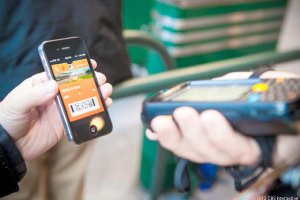Developments in mobile payments and the shift to placing convenience into the hands of consumers by allowing them to transact via their mobile phone through a variety of on-line channels, is dominating news in this sector. ‘Frictionless payment’ is the latest buzzword in this regard with respect to purchasing digital content
by ID People Reporter
 Mobile payments and analytics company, Bango, recently announced that their integration with Facebook is now live. Bango is providing Facebook mobile web carrier billing in Germany, the UK and USA, and the service is being expanded to other countries during the remainder of 2012.
Mobile payments and analytics company, Bango, recently announced that their integration with Facebook is now live. Bango is providing Facebook mobile web carrier billing in Germany, the UK and USA, and the service is being expanded to other countries during the remainder of 2012.
Following an initial announcement of the partnership in February 2012, Bango now provides Facebook mobile web carrier billing as part of an improved mobile payments flow. This enables Facebook’s mobile web users to purchase digital content without the use of premium SMS messages or the limitations of credit cards. Instead, users enjoy frictionless operator billing, paying on their phone, without the need to register personal details.
App stores, publishers and content providers already use Bango to collect payment from mobile users for online content and services. Bango says its pervasive presence across app stores, publishers and mobile operators creates a platform effect for its partners, leading to more identified mobile users and maximizing the number of single-click payments.
The result is significantly higher rates of collection. This is the experience that Facebook is now using for its smartphone payments service on the mobile web.
App store connections
In addition to Facebook, Bango’s existing app store connections include Blackberry App World, Opera Mobile Store and operator-led connections to Google Play. Bango has also announced an agreement to provide payment services to Amazon and has become a technology partner for MasterCard’s PayPass mobile wallet.
According to Bango, conventional operator billing is expected to achieve a 40% conversion rate. Put simply, most mobile commerce customers who click ‘buy’, do not successfully buy. Billing with the Bango payment platform delivers an average conversion rate of 77%. Most users who click ‘buy’, do buy, they say. Bango CEO Ray Anderson says frictionless payment experience is unlocking the business potential of the mobile web, adding these services are maturing and improving as consumers become increasingly keen to purchase digital goods on mobile devices.
Facebook: Mobile engagement
Meanwhile, Facebook CEO Mark Zuckerberg said that mobile drives more engagement per person on the desktop and will make more money per amount of time spent than on the PC.
 News pundits in the payments space see this progression as a a clear signal that Facebook sees the future of its business as being mobile. They believe that demonstrating it has ways of monetizing its mobile user base, is vital for Facebook’s future and demonstrates that Facebook sees this monetization as beyond mere advertising.
News pundits in the payments space see this progression as a a clear signal that Facebook sees the future of its business as being mobile. They believe that demonstrating it has ways of monetizing its mobile user base, is vital for Facebook’s future and demonstrates that Facebook sees this monetization as beyond mere advertising.
Some believe many of the social media giant’s target customers will be prepay and ‘may be reluctant to eat up their limited credit with additional charges for content’ – particularly as this service is currently restricted to payments for digital goods. However, commentators also suspect this may be part of a bigger drive to bring Facebook into real-world payments.
While many people feel that a shift to mobile is inevitable, and that cell phones will eventually prove more practical and convenient than credit and loyalty cards, one of the questions that are headlining in the media is whether mobile applications are helping to consolidate the plethora of payment and credit cards that populate people’s wallets today.
Mobile reward schemes
 In the consumer world examples already deployed include applications such as Starbuck’s reward scheme which gives customers access to free Starbucks products, and link the points program to any major credit card via their mobile. With the Starbucks for iPhone and Android, customers can check their balance, reload cards with and view transactions on their iPhone, iPod Touch or Android.
In the consumer world examples already deployed include applications such as Starbuck’s reward scheme which gives customers access to free Starbucks products, and link the points program to any major credit card via their mobile. With the Starbucks for iPhone and Android, customers can check their balance, reload cards with and view transactions on their iPhone, iPod Touch or Android.
Meanwhile, Forbes reports that Apple’s recent Passbook feature, a simple way to manage gift cards, coupons and tickets, hints at a looming ‘iWallet’ mobile payment feature that could have considerable impact on shifting consumer payments market share.
In a recent interview with Mark Scott, CEO of Northern Pixels, they reported that with billions of dollars at stake, the mobile payment market today is still muddled with multiple players but no clear, undisputed leader.
There are two approaches in play. One uses embedded hardware in the form of a near-field communications chip (NFC) within smartphones, which requires an NFC-enabled merchant device to handle the transaction. The other is an app-based cloud transaction approach. The recent release of the iPhone 5, without an NFC chip, and the launch of iOS 6 with the new Passbook feature are signaling Apple’s preference for the cloud approach.
While banks and credit card companies are preoccupied with hardware infrastructure and the mobile app, Apple is playing on a whole new level. Passbook is designed to influence consumer choice and the timing of purchases.
Passbook, by using the phone’s GPS and hardware sensors, can geo-locate a consumer and generate a notification designed to result in a well timed transaction. That’s intriguing on a gift card level, but consider how potent it can be coupled with mobile payment functionality and mobile marketing.
According to Apple, preferred, or sponsoring merchants will be able to take a payment from an iPhone and stimulate a purchase emotion or opportunity. Old school credit card points and loyalty programs will suddenly seem archaic.
Other pundits concur but also question Apple’s decision not to add NFC to the newly launched iPhone 5. Overall Passbook is being heralded as a win-win situation for consumer and retailers – saying both consumer and retailers are benefitting from the use of the Passbook. Consumers are said to be are happy because of the discounts and easy access to things like loyalty cards. Retailers are profiting because the use of the application is helping to generate more in-store traffic.
NFC for tap and go transactions
Google Wallet went a step further with NFC. It holds users’ credit and debit cards, offers, and rewards cards – and following an upgraded release any card from Visa, MasterCard, American Express, or Discover can be used in conjunction with the app. To pay in-store, consumers select the card they want to use, and then tap their phone to any contactless point of sale terminal.
Payment information is transmitted via near field communication (NFC), followed by a transaction record with merchant name and dollar amount on the phone. Google Wallet claims safety and security as the app has its own PIN, and if a phone is lost, the mobile wallet can be remotely disabled.
But Paypal, which this year launched a dedicated mobile app to pay at high street stores, stated its move underlined their view that mobile payments do not need near field communication (NFC) technology to succeed. PayPal’s said its ‘pay by mobile’ service works with the phones most of its customers already own. And retailers do not need to install new systems to take in-store mobile payments.
This application is available for both Android and Apple iOS devices and will provide customers with a barcode and transaction number, which sales assistants can then use to take a payment straight from their PayPal account.
PayPal also stated research carried out last year amongst major retailers suggested that 2016 will be the year consumers would not need a wallet to shop on the high street – ‘a phone will be enough’.
Emerging new players
All this points to an emerging world of new players in the smart payment domain and it is unlikely that the banks and credit card companies will just sit back and watch their traditional marketplace being eaten up by new players.
Analysts on the traditional side of the fence are saying that banks can seize mobile payments as an opportunity, provided they define a clear strategy and invest accordingly. To that purpose, we recommend a series of actions for banks to pursue in mobile banking, mobile commerce and mobile money transfers.
In particular, regarding mobile money transfers, they say banks should look to make a bolder move and develop a global person-to person payments service that is mobile-enabled. In doing so, banks will pro-actively shape the future of mobile payments.
But in other quarters, pundits for mobile say the banks have a delicate game to play. Mark Scott believes that by promoting mobile transaction apps, banks are nurturing a consumer behavior that could cost them billions if a new leader emerges and takes their place.
